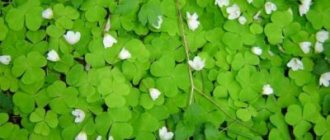The primary focus of the domestication of chrysanthemums and the center of their modern species diversity are the subtropical regions of China and Japan, which represent a historically established natural bank of genes and their combinations. Wild perennial species of chrysanthemums (Chrysanthemum), genetically related to the garden chrysanthemum (Chrysanthemum hortorum Bailey), still exist in the subtropical, pre-subtropical, warm temperate regions of China, Korea, Japan, and the southern regions of the Russian Far East. The flora of China includes 17 species of chrysanthemums, Korea - 12, Japan - 19, Mongolia - 4, Russia - 9.
How to achieve long-lasting flowering
Follow three simple rules for home care:
- temperature regime. Owners of loggias and balconies must use them for growing chrysanthemums.
- choose locations that receive indirect sunlight
- pinch regularly and remove yellow and wilted leaves.
We’ll tell you more about how to grow it at home below.
Where to put a pot of chrysanthemum
Look for illuminated places for potted chrysanthemums, preferably windows that greet the sunrise or see off the sunset.
Indoor flowers are afraid of overheating, so in summer, maintain the room temperature no higher than 23 C. In autumn and winter, flowers do not require additional heating; they tolerate up to +3 C well.
Chrysanthemum care
In general, they are moisture-loving plants. Houseplants most often die due to insufficient humidity, so we spray them daily with a spray bottle in the morning or evening, and you can also use air humidifiers.
The soil should be moistened, but do not cause floods. How to water a flower in the active growth phase - 2 times a week is enough.
Preparing for hibernation and the new season
When the chrysanthemum has faded, it needs to be allowed to rest before the next season. We advise you to trim it and put it in a cool, dark room. This way, the flowers will rest and gain strength for the new season. Annual replanting is useful for home flowers
To ensure that the chrysanthemum becomes a long-liver in your home, replant it correctly. Young flowers are hardier, so they can be replanted every year. But it is advisable not to disturb adults for two or three years.
Don't be lazy and replant young chrysanthemums every spring. As soon as green shoots appear in last year's pot, the chrysanthemums are ready for replanting.
Choose a larger pot every year. Homemade chrysanthemums love soils that contain turf, white sand, garden soil and humus. Turf and garden soil are three times larger than other components.
We recommend adding drainage to the bottom of the pot; expanded clay is perfect. The prepared soil is scalded with boiling water, when it dries you can plant the flowers.
Procurement of raw materials
The petals are harvested in November. The collected flowers are dried in a well-ventilated area. From 5 kg of petals 1 kg of raw materials is obtained.
In the treatment of diseases of any origin and stage, you can use folk recipes that give an amazing effect - naturally, with proper and timely use. To be prepared to overcome health problems, you should constantly update your knowledge in this field.
We recommend reading interesting articles about the benefits of physalis fruits, about the amazing properties of microscopic algae chlorella, about pleasant medicines from wonderful violets.
We appeal to you, dear readers: do you use the healing qualities of beautiful chrysanthemums? How does tea made from their petals affect your body? What ailments have you been able to overcome with the help of this plant?
Good nutrition is the key to a lush bouquet
A complex of mineral fertilizers is ideal for indoor chrysanthemums. They contain phosphorus and potassium, which promote early flowering. And don't forget to use liquid organic fertilizer.
You need to feed before flowering begins, and not at the right time. An adult home chrysanthemum is a plant that begins to need regular feeding. Use mineral fertilizers once every 10 days.
A little history
Chrysanthemums are herbaceous annual and perennial plants belonging to the Asteraceae family, which includes 29 species. For thousands of years, they have grown in temperate and cool climates, usually in Asia.
In Europe, plants began to be cultivated in the 17th century. The chrysanthemum is considered a symbol of the imperial family in Japan. In China, the plant is considered medicinal; drugs are made on its basis for the treatment of gastrointestinal tract, eye ailments, migraines, and nervous diseases. The room also becomes more comfortable if there is a homemade chrysanthemum in a pot. How to care for it so that the flower actively develops? It is required to follow simple rules, which will be discussed below.
Flower propagation
There are three ways to share flowers with friends:
- Cuttings
- By division during transplantation
- seeds.
Let's look at each method in more detail.
Cuttings
The most common way. To do this, select cuttings up to 10 cm high. The upper leaves are left and the entire length is removed. The resulting workpiece is placed in water or a peat mixture. As soon as roots 30-40 cm long appear, they can be transplanted into pots using the technology described above.
If you choose the option of rooting in peat, then you can build an artificial greenhouse over the green shoot. A plastic bag is suitable for this. Don't forget to remove it every day for ventilation.
By division during transplantation
You need to divide the bushes during replanting after winter. Carefully dig up the bush and shake off excess soil from the roots.
At the same time, prepare the instrument for circumcision and pour boiling water over it. Divide the bush so that each section has a few stems and quality roots. To prevent chrysanthemums from getting sick, treat the cuts with charcoal.
Propagation by seeds
Propagation by seeds is the most troublesome, but at the same time it is amazing to watch how a green seedling emerges from a tiny seed. Seeds are planted in small shallow containers.
The soil should consist of peat and humus. And it’s better to scald even store-bought soil or heat it to 130 C to avoid diseases. And chrysanthemums can get sick. They can get sick with powdery mildew, septoria and gray rot.
The seeds are slightly deepened at the surface, often sprayed and covered with film. In order for a beautiful and long-awaited flower to grow from a seed, you need to make a lot of effort:
- keep the temperature at 23-25 s
- ventilate under film
- moisturize and water regularly
After 2 weeks, the first shoots appear; immediately place them in a lighted place. Continue covering with film, but increase the ventilation time. So to speak, harden yourself to new conditions. 2-4 large leaves are a clear sign that the plants are ready for individual cups.
The main thing is to carefully dig out and plant without touching the young root system.
Feeding
How to care for a chrysanthemum in a pot to achieve beautiful and long-lasting flowering? It is necessary to feed them. Fertilizers are applied after replanting the bushes. This procedure uses a solution of “Kristalon”, “Bona Forte” or another fertilizer, which consists of nitrogen, magnesium, potassium, zinc, and phosphorus. Feeding is necessary for the development of the plant and ensures good flowering.
During the formation of bushes, nitrogen fertilizers are used. Before flowering, phosphorus-potassium products are used. An infusion of bird droppings, diluted with water (ratio 1:30), is suitable. The solution is applied until the buds appear every 5 days.
Types and varieties of chrysanthemums
We invite you to take a closer look at the photos of homemade chrysanthemums on packets with seeds or at the color of the buds if you are buying an already mature plant.
Breeders have bred a short chrysanthemum for home use, thanks to the use of growth-stunting drugs.
But there are exceptions; a purchased cutting can become a garden bush. At home, the following varieties have proven themselves to be excellent: Chinese mulberry, Indian and Korean.
There is such a variety of varieties that every gardener will definitely find a suitable flower to suit his taste and color. Home chrysanthemum is an excellent indoor flower, suitable for almost any apartment and gardener.
Main problems when growing
During the growing season of plants in apartment conditions, gardeners are faced with various problems; let’s consider the main ones.
Why do the leaves turn yellow?
If replanting after purchase was not accompanied by proper care of the crop, yellowing of the leaves of the flower can be observed.
This unpleasant phenomenon is associated with a lack of lighting, lack of moisture in the nutrient substrate or hot air in the room .
Sometimes the cause of leaf discoloration can be a fungal infection.
To prevent drying out, you need to take into account all these nuances.
Why doesn't chrysanthemum bloom?
The lack of flowering on a crop in most cases occurs due to a deficiency or excess of natural light.
It should be taken into account that chrysanthemum is considered a short-day crop. When lighting devices are turned on in the morning and evening, the biorhythms of the flower are disrupted. Another reason why chrysanthemum does not bloom is excessive feeding.











